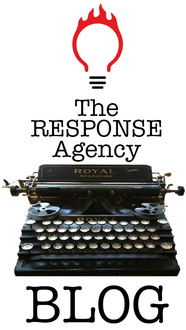It all started with the dentist’s direct mail. As you might expect, it was laden with photos of beautiful people showcasing perfect smiles. Yet something was missing. Namely, people who weren’t Caucasian.
Last time I looked around, much less checked U.S. Census Bureau data, I found that non-Caucasians account for more than a third of our nation’s population. Moreover, to the best of my knowledge, they all grow teeth.
But since that was just one direct mail piece, I decided upon an exercise. I piled all of the past few days’ worth of direct mail, most of it from national advertisers, on my desk. Then I counted the photos and illustrations with people in them. In the final tally, 89 percent showed white people only, six percent showed non-whites only, and five percent showed both.
Further indulging my gluttony for punishment, I grabbed two mass-circulation magazines and counted anew. In one, a news magazine, 71 percent of ad photos with people in them showed whites, seven percent showed non-whites, and 22 percent showed both. The other, a general interest magazine, was less encouraging. In every ad with a photo of people, the people were white. Period.
Purely from a marketing standpoint, an advertiser who depicts customers of just one race risks losing sales, since those who are excluded may fail to identify with the ads, or even take offense. But from a human standpoint, the concern runs deeper. While the human ability to spot small differences proves useful for mushroomers who wish to avoid poisoning themselves and for children who need to keep family members straight from strangers, it proves harmful when societies needlessly separate into “us” and “them.”
Needlessly is no exaggeration. Decades after the hippies sang about filling the world with love, buying it a Coke and treating one another as brothers and sisters, science has borne out the “brothers and sisters” part. Evidence from mitochondrial DNA shows that any two people from any two points on the globe share not just ancestors, but lots of them. And that on average there are more genetic differences between members of the same race than between races themselves.
Advertising that is more inclusive will appeal to more people. Better and beyond that, advertisers have a powerful opportunity to reinforce the fact that humankind really is one vast family. Let’s not waste the opportunity.
I doubt that the dentist intended any slight. Everyone could do with the occasional reminder. We hope this one serves.
—Steve Cuno
 RSS Feed
RSS Feed



